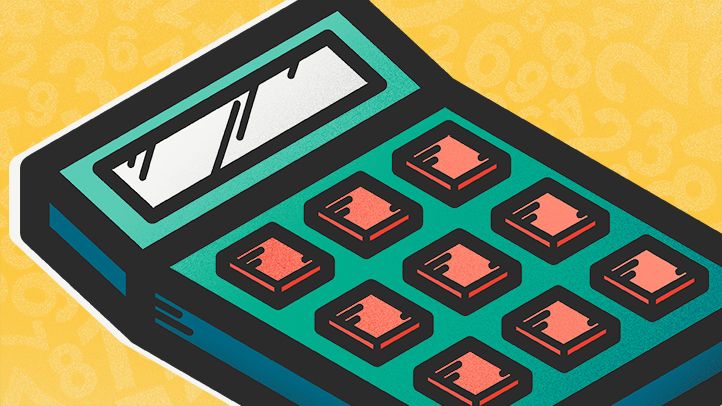Figuring out your basal metabolic rate with a formula or online calculator can help you determine the calorie deficit needed to help you shed pounds.
The number of calories you need just for your body to function is called your basal metabolic rate, or BMR. If you know your BMR, you can better determine your caloric needs for healthy weight loss.
You burn most of your daily calories with zero effort, movement, or even thinking. Whether you’re sleeping, talking on the phone, working at a keyboard, or simply watching TV, your body is burning calories to keep your organs functioning such as your heart pumping and your lungs breathing. The calories used to maintain these basic bodily functions add up to your BMR. “Basal” essentially means “base” — think of it as the amount of energy (aka number of calories) that’s just enough to cover all your body’s bases.
BMR — which is often used interchangeably with resting metabolic rate, or RMR (more on that later) — is one of many factors in the total number of calories you burn in a given day, also called your total daily energy expenditure (TDEE). It accounts for roughly 60 to 75 percent of your TDEE, according to the National Academy of Sports Medicine (NASM).
TDEE is determined by genetics, biological sex, age, body size, and lean body mass. Hormonal health can also affect metabolism.
While many people blame a slow metabolism (they mean BMR) on weight gain, it’s actually true that increases in body size result in an increase in BMR, explains Tim Church, MD, PhD, chief medical officer at Wondr Health.
The majority of differences between any two people’s basal metabolic rate comes down to fat mass and free-fat mass, which includes organ size and muscle levels, writes Herman Pontzer, associate professor of evolutionary anthropology at Duke University, in an article for Scientific American. Age is also a factor, he says.
At rest, a pound of fat burns roughly two calories per day and a pound of muscle burns roughly six calories, Dr. Church says.
That’s why men naturally enjoy a higher BMR than women, as they tend to have more overall body size and lean mass levels, explains Sari Greaves, RDN, a registered dietitian-nutritionist at LBS Nutrition in East Brunswick, New Jersey, and author of Cooking Well.
RELATED: A Scientifically Proven Way to Lose 1 Pound of Weight
BMR and RMR are slightly different.
“BMR is the absolute minimum metabolic rate,” Church says. It is typically determined only in laboratory settings, with people undergoing measurements in a darkened, temperature-controlled room immediately after 8 hours of sleep and 12 hours of fasting and reclining, according to the American Council on Exercise.
Meanwhile, “RMR is the metabolic rate when at rest, awake, and sitting still.” RMR testing does not require a fast and may be performed later in the day. RMR is typically 10 to 20 percent higher than BMR, according to the NASM.
RELATED: 21 Tips for Weight Loss That Actually Work
Knowing your BMR or RMR can help you better determine your total daily energy expenditure in order to create a caloric deficit, defined as consuming fewer calories each day than you burn for energy. A caloric deficit is required to lose weight.
But because most people do not have access to state-of-the-art labs that are required to determine BMR, equations are often used to make approximations. The easiest way to measure your metabolic rate is to use an online calculator. You can find many calculators online, and all use varying equations.
The commonly used metabolic equation, called the Harris and Benedict equation, was first designed in 1918 (and updated in 1984). While it was intended to estimate BMR, it actually estimates RMR, according to the NASM. It uses height, weight, biological sex, and age to determine RMR and is based on average lean mass levels. The Mifflin-St Jeor equation is another equation that uses the same variables but may be more accurate, Church says.
Other metabolic equations, such the Cunningham equation, use your total levels of lean body mass, which is a primary determiner of BMR and therefore RMR. Yet using such a calculator requires you to be able to measure your body’s levels of fat versus free-fat mass, Church says. Calipers and smart scales are two popular at-home options, while the most accurate measures are performed in professional and laboratory settings.
RELATED: 9 Hard Truths About Weight Loss That Can Help You Slim Down
Below, you can see how estimated RMR varies based on the equation used.
Men: (88.40 + 13.40 x weight in kg) + (4.80 x height in cm) – (5.68 x age in years)
For example, if a man is 180 pounds, 5'11", and 43, his RMR is 1,804 calories.
Women: (447.60 + 9.25 x weight in kg) + (3.10 x height in cm) – (4.33 x age)
For example, if a female is 130 pounds, 5'3", and 36, her RMR is 1,333 calories.
Men: (9.99 x weight in kg) + (6.25 x height in cm) – (4.92 x age in years) + 5
For example, if a male is 180 pounds, 5'11", and 43, his RMR is 1,734 calories.
Women: (9.99 x weight in kg) + (6.25 x height in cm) – (4.92 x age in years) – 161
For example, if a female is 130 pounds, 5'3", and 36, her RMR is 1,249 calories.
Men and women: 500 + (22 x lean body mass in kg)
For example, if a man is 170 pounds, 5'11", 43, and his body-fat percentage is 20 percent, his RMR is 1,857 calories.
For example, if a female 130 pounds, 5'3", 36, and her body-fat percentage is 25 percent, her RMR is 1,473 calories.
BMR or RMR can be used to estimate total daily caloric expenditure. According to the American Council on Exercise, after you determine your RMR, based on one of the above equations or an online calculator, you can multiply it by one of the numbers below, called activity factors:
If the man in the above example exercises two days per week, his daily caloric expenditure is roughly 2,384 to 2,481 calories.
If the woman in the above example exercises six days per week, her daily caloric energy expenditure is roughly 2,155 to 2,541 calories.
This calculation gives you the estimated number of calories you burn in one day at your current level of activity; this is how many calories you need to consume per day to stay at your current weight.
RELATED: 7 Tips for Eating Out When You’re Trying to Lose Weight
To lose weight, you need a caloric deficit, meaning that you either must reduce your caloric intake below your total daily energy expenditure or increase your total daily energy expenditure, says Greaves. For example, you can try multiplying your RMR by various activity factors to see how your daily caloric burn would fluctuate with increased exercise.
Another benefit of increased exercise is that it can have a small effect on both RMR and BMR. Research shows that intense exercise provides a temporary boost to your RMR, an effect sometimes referred to as afterburn, or excess post-exercise oxygen consumption (EPOC). This represents the calories that the body expends to return the body to homeostasis following exercise.
Strength training provides a more lasting boost to BMR by altering your body’s composition. As previously stated, a pound of fat burns roughly two calories per day while a pound of muscle burns six at rest, Church says. To put that into perspective, gaining two pounds of muscle will increase RMR by about 12 calories.
Additional reporting by Dennis Thompson Jr.
Everyday Health follows strict sourcing guidelines to ensure the accuracy of its content, outlined in our editorial policy. We use only trustworthy sources, including peer-reviewed studies, board-certified medical experts, patients with lived experience, and information from top institutions.
By subscribing you agree to the Terms of Use and Privacy Policy.
Recent results from a 4-year study also showed Wegovy (semaglutide) delivered heart health benefits not tied to weight loss.
Gastric mucosal ablation, a noninvasive endoscopic procedure, curbs production of the hunger hormone ghrelin.
Learn about obesity medicine specialists, trained experts who provide comprehensive care for obesity and related health conditions, improving overall …
Explore the latest in obesity treatment options, including bariatric surgery and GLP-1 medications. Learn how to choose the right path with your healthcare…
Explore how GLP-1 drugs like Ozempic and Mounjaro are reshaping the conversation around weight loss, with insights from celebrities and medical experts…
Jump-start your weight loss using these scientifically backed, practical tips from registered dietitians that will help you learn to savor your food, …
A new generation of weight loss drugs offers hope to millions struggling to lose weight. But when it comes to our health, is there more at stake than …
When thoughts about food are persistent and intrusive, managing weight can become more challenging. Here’s how to turn down the volume, with or without…
GLP-1 weight loss drugs cost more over time than a relatively new weight loss procedure called endoscopic sleeve gastroplasty, finds a new study.
This members-only program includes virtual doctor visits, nutritional advice, and weight loss medications.
By subscribing you agree to the Terms of Use and Privacy Policy.


